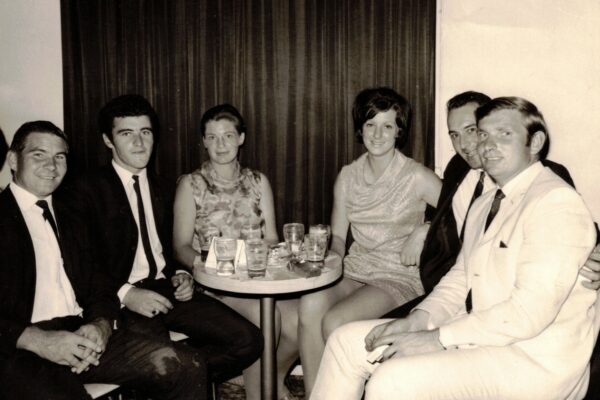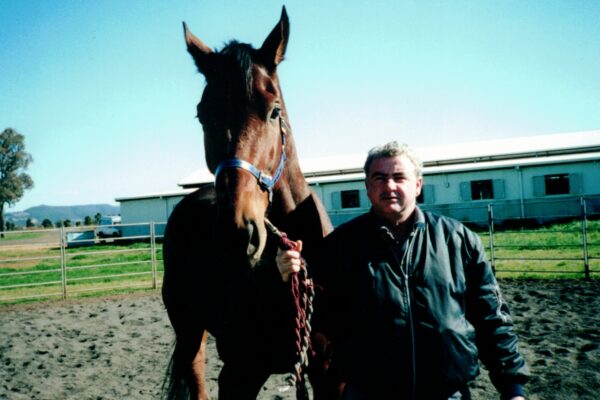Old Racing Days Recalled
Featured Image: ‘Old’ Scone Race Tracks
Excerpt, ‘From Old Satur Racecourse Recalled’, Letter to the Editor, Scone Advocate, Tuesday 27th June 1961; Reprinted in ‘Mac Bridge; The Man and his Recollections’ by Heather Ashford and Margaret Ashford-Macdougall 1983, Scone and Upper Hunter Historical Society, 1983 Bi-Centennial Publication No. 2
Half a century ago racing history was made on the old Satur (Scone) racecourse.
The old course is now part of Sledmere, three miles from Scone on the Bunnan Road. The old track, which was classed as one of the best in the State, had a circumference of eleven furlongs with a testing straight of upwards of two furlongs. Meetings on the old track drew entrants from all parts of the State, including Sydney.
History was made a long time ago when the third horse was placed first. The Friar ran first in a race from Lanoline, with In Doubt (a Nandowra owned gelding) following the pair a few lengths in third place. When The Friar was about to take the lead a short distance from the post, from Lanoline, ridden by George Courtney, the latter caught hold of the bridle reins of The Friar. Even this did not stop the leader from running home in first place. Courtney was sent out for two years for his share in the breach, and his mount was eliminated from the placings.
A whisper went the rounds that The Friar was a ring-in. An inquiry by the officials confirmed the whisper.
Result: Winner and connections ousted for a long stretch. The twenty to one In Doubt moved up from third to first place.
The late Ernie (“Stump”) Marks, well known identity around Scone about the turn of the century, recalled the times when he was bookmaking with Dan Lewis. He said Lewis came from New Zealand and carried his swag from Sydney to Scone. The two became partners in a bookmaking venture in 1910. He said Lewis won his first race with a horse named Graphite at Spring Ridge, near Quirindi (probably this horse was ridden by Fred Snell of Scone).
Later, Dan Lewis was a successful trainer at Randwick. The winners he trained were legion.
Marks said he wanted to be a jockey but his parents ruled otherwise, and apprenticed him to the saddlery trade under the guidance of Edward Solomons. Two he mentioned who served their time with him were Frank Thrift of Parkville and Arthur Fox of Bunnan.
More than seventy years ago Marks rode track work on Scone’s first race course, now part of the site of Scone Hospital. He said the best horse he rode was a 14.2 bay stallion named Dunwell. Before his owner, Jim Hardcastle (familiarly called Old Bussen) knew the pony could gallop he was one of the four in hand in the mail coach that plied between Scone and Moonan Brook. Ernie said in those days horses never broke down or became touched in the wind, and blamed the hosing down of horses on winter mornings for the wind ailment. Horses worked in blanket rugs and were thoroughly dried after working.
The only hors eh ever owned was Pantheist, bought for £20 and sold for £40 after winning a Merriwa handicap. Charlie Dodds, a Newcastle trainer, rode Pantheist.
Marks told a humorous story about a race meeting he attended at Rooty Bank, between Moonan Flat and Ellerston, many years ago.
A bookmaker went up against the favourites and could not pay. The bookie and clerk had planned to escape in a buggy if the worst happened, which it did. They jumped into the buggy, slashed the horse with the whip. It jumped clear of the shafts and bolted. Someone had undone the harness. They were then left to the mercy of the crowd. The majority only got their money back and the police took charge of the two men.
A quartet that raced about the Upper Hunter in the 1890’s was Sylva, by Zeno (bred by James Campbell of Arden Hall), Lagoona, Hesitation and Lazy Girl. Breeding of the latter three is unknown to the writer.
The last named, Lazy Girl, won a Scone Cup on the track near the present hospital. She was given the back-breaking weight of thirteen stone. The rider was that good horseman, ‘Jimmy’ Smith. When it came to the weighing out, it was found that there was not enough lead in Scone to make up the difference between the weight James and saddle and thirteen stone. Wet corn sacks were brought into use.
The reaming trio won a great number of races. The four were stabled in premises on the southern side of St Aubins Street, between Guernsey and Hill Streets. The horses were given their light exercise work on the flat between Hill Street and what is now the farm on the eastern bank of Kingdon Ponds.
Another good mare that won races throughout the Colony was Cyanide, owned and raced by Jim Hardcastle, at the run of the century mine host at the Railway Hotel at Scone, now the Royal Hotel.
Cyanide in 1900 competed in both the Caulfield and Melbourne Cups with profit to her owner.
James had two half brothers, Jack (‘Rooty’) and Ernie (‘Boodle’) Willis. Once Jim took the mare to Newcastle, one half of the brothers accompanied him, and, on seeing the Pacific Ocean for the first time, mistook it for a vast Lucerne paddock and said, “Jim, what a paddock to turn Cyanide in for a spell! Not even a stump she might hurt herself on. You know, Jim, there are too many stumps in Bakewell’s Paddock where you turn her out for a spell. I’m always afraid that someday we will find her crippled”.
‘From Old Satur Racecourse Recalled’, Letter to the Editor, Scone Advocate, Tuesday 27th June 1961;
Dan Lewis was in charge of the billiard room at the Willow Tree Hotel, Liverpool Street (now Morgan & English, Lawyers). In Scone at the turn of the century M H Bridge mentions that Dan Lewis conducted a billiard room where Elders Office is now located in Kelly Street.
The Royal Hotel remained in Jim Hardcastle’s hands until he sold it in 1928 to S G ‘Stan’ Keene.










